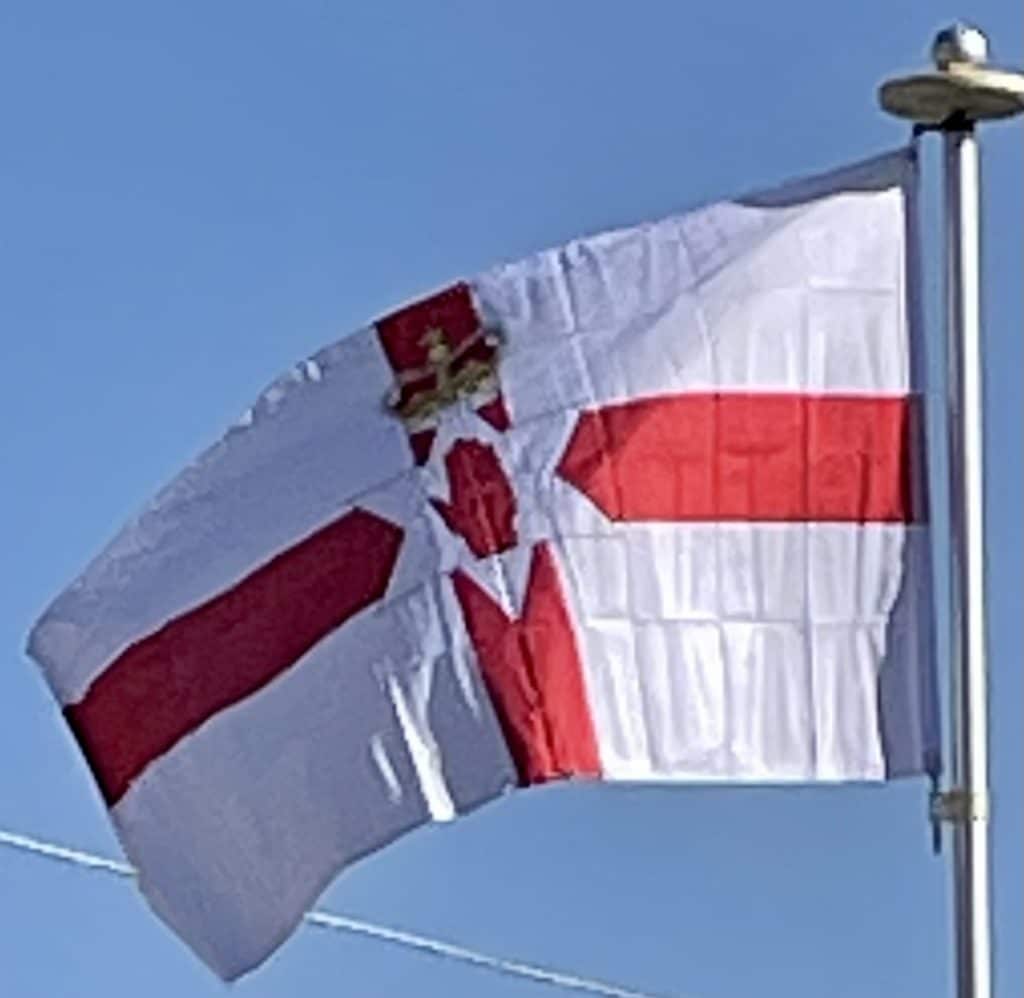In early medieval Ireland, a branch of the Northern Uí Néill, the Cenél nEógain of the province of Ailech, gradually eroded the territory of the province of Ulaidh until it lay east of the River Bann. The Cenél nEógain would make Tír Eóghain (most of which forms modern County Tyrone) their base. Among the High Kings of Ireland were Áed Findliath (died 879), Niall Glúndub (died 919), and Domnall ua Néill (died 980), all of the Cenél nEógain. The province of Ulaidh would survive restricted to the east of modern Ulster until the Norman invasion in the late 12th century. It would only once more become a province of Ireland in the mid-14th century after the collapse of the Norman Earldom of Ulster, when the O’Neills who had come to dominate the Northern Uí Néill stepped into the power vacuum and staked a claim for the first time the title of “king of Ulster” along with the Red Hand of Ulster symbol. It was then that the provinces of Ailech, Airgialla, and Ulaidh would all merge largely into what would become the modern province of Ulster.
Domnall Ua Lochlainn (died 1121) and Muirchertach Mac Lochlainn (died 1166) were of this dynasty. The Meic Lochlainn were in 1241 overthrown by their kin, the clan Ó Néill. The Ó Néill’s were from then on established as Ulster’s most powerful Gaelic family.
The Ó Domhnaill (O’Donnell) dynasty were Ulster’s second most powerful clan from the early thirteenth-century through to the beginning of the seventeenth-century. The O’Donnells ruled over Tír Chonaill (most of modern County Donegal) in West Ulster.
After the Norman invasion of Ireland in the twelfth century, the east of the province fell by conquest to Norman barons, first De Courcy (died 1219), then Hugh de Lacy (1176–1243), who founded the Earldom of Ulster based on the modern counties of Antrim and Down.
In the 1600s Ulster was the last redoubt of the traditional Gaelic way of life, and following the defeat of the Irish forces in the Nine Years War (1594–1603) at the battle of Kinsale (1601), Elizabeth I‘s English forces succeeded in subjugating Ulster and all of Ireland.
The Gaelic leaders of Ulster, the O’Neills and O’Donnells, finding their power under English suzerainty limited, decamped en masse in 1607 (the Flight of the Earls) to Roman Catholic Europe. This allowed the English Crown to plant Ulster with more loyal English and Scottish planters, a process which began in earnest in 1610.
Plantations and civil wars:
The Plantation of Ulster was the organized colonization (or plantation) of Ulster by people from Great Britain (especially Presbyterians from Scotland). Private plantation by wealthy landowners began in 1606, while the official plantation controlled by King James I of England (who was also King James VI of Scots) began in 1609. All land owned by Irish chieftains, the Ó Neills and Ó Donnells (along with those of their supporters), who fought against the English Crown in the Nine Years War, were confiscated and used to settle the colonists. The Counties Tyrconnell, Tyrone, Fermanagh, Cavan, Coleraine and Armagh comprised the official Colony. However, most of the counties, including the most heavily colonized Counties Antrim and Down, were privately colonized. These counties, though not officially designated as subject to Plantation, had suffered violent depopulation during the previous wars and proved attractive to Private Colonialists from nearby Britain. The efforts to attract colonists from England and Scotland to the Ulster Plantation were considerably affected by the existence of British colonies in the Americas, which served as a more attractive destination for many potential emigrants.

